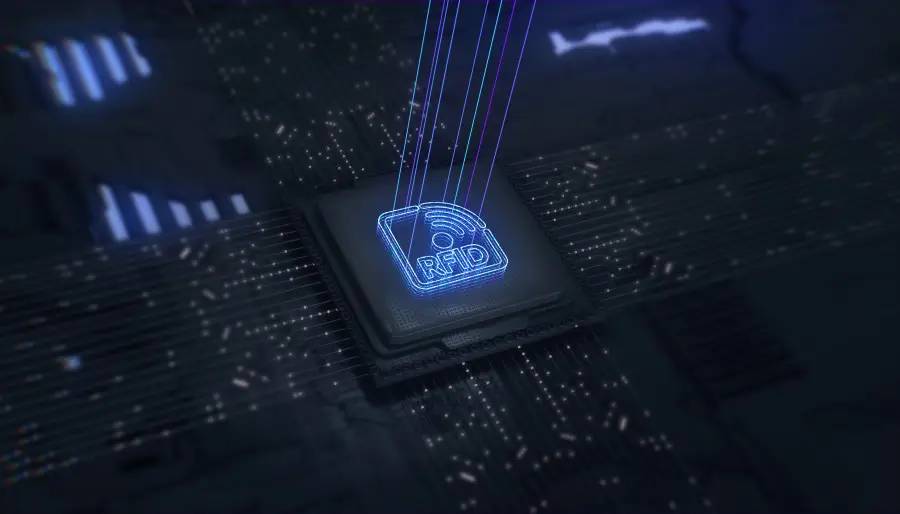RFID is the English abbreviation of radio frequency identification, is a kind of automatic identification technology, can identify specific targets and read and write relevant data through radio signals, without the need to establish mechanical or optical contact between the identification system and specific targets, it is considered to be one of the most promising information technology in the 21st century.

The radio signal is transmitted from the tag attached to the item through an electromagnetic field tuned to radio frequency to automatically identify and track the item. Some tags can get energy from the electromagnetic field emitted by the identifier during identification and do not need batteries; there are also tags that have their own power source and can actively emit radio waves (electromagnetic fields tuned to radio frequencies). The RF tags contain electronically stored information and can be identified within a few meters. Unlike bar codes, RF tags do not need to be within the line of sight of the identifier and can be embedded within the object being tracked.
The basic working principle of RFID technology is not complicated: the tag enters the reader, receives the radio frequency signal from the reader, and sends the product information stored in the chip (passive tag) by virtue of the energy obtained from the induction current, or the tag actively sends a signal of a certain frequency (active tag), and the reader reads the information and decodes it, then sends it to the central information system for relevant data processing.
Readers can be read or read/write devices depending on the structure and technology used, and are RFID system information control and processing centers. The reader is usually composed of coupling module, transceiver module, control module and interface unit. Half-duplex communication is generally used between the reader and the tag for information exchange, while the reader provides energy and timing to the passive tag through coupling. In practical applications, management functions such as collection, processing and remote transmission of object identification information can be further realized through Ethernet or WLAN.
As a new technology which is widely used in many industries and fields, RFID technology has outstanding advantages.
In terms of its external manifestation, the carrier of RFID technology is generally required to have the characteristics of waterproof, anti-magnetic, high temperature resistance, etc., so as to ensure the stability of RFID technology in application. In terms of its use, compared with the traditional bar code technology, radio frequency identification has more advantages in real-time update data, storage information, service life, work efficiency, security and so on. It is conducive to saving human and material resources and financial resources. Through the multi-target simultaneous identification, RFID technology greatly improves the working efficiency, makes the work more convenient. In addition, RFID has the password protection, which is not easy to be forged, the security is higher, and can better satisfies the industry as well as the related field’s need.
However, the development of RFID technology also has several of its inevitable drawbacks.
First of all, security is not strong enough. As RFID tags do not need to contact directly with the transceiver, users have no way of knowing the situation by others to read the information stored in the tag, which constitutes a security issue; in addition, the cost is high. RFID tags are relatively expensive compared to ordinary bar code tags, thus largely reducing the market enthusiasm for the use of RFID technology.
Despite these risks, Jimi effectively avoids them whilst extending these technologies to vehicle trackers and cargo trackers as well. Taking LL303 as an example, by identifying the location of the vehicle, it can further expand the application scenarios, such as finding the available vehicles that can be called nearby and checking whether the vehicle is running normally in the zone; in addition, RFID technology can be used in identification due to its fast reading and hard-to-forge nature. When the fleet manager binds the driver to the vehicle, it can identify the driver’s identity when the driver is about to get on the vehicle, ensure the person-vehicle correspondence, effectively supervise the driver’s attendance, and also plays a role in vehicle theft prevention.
About Us
Jimi loT aims to provide customers with innovative, mutually beneficial, safe and efficient international intelligent hardware and IoT solutions. At present, our products have been sold to more than 130 countries, with an annual shipment of 6 million units. The volume reaches 10 million units, and we have set up service centers and marketing centers in many countries to provide customized services for the local market and build an international marketing and service network covering the world. Jimi loT shoulders the mission of “making connections easier”, and is constantly striving to realize the vision of becoming a continuous leader in IoT enterprises.
If you want to know more information about Jimi IoT, Please click here for more information, or join our Facebook, LinkedIn, INS, and Twitter pages to learn more.
 EN
EN ES
ES PT
PT TH
TH VN
VN JP
JP


